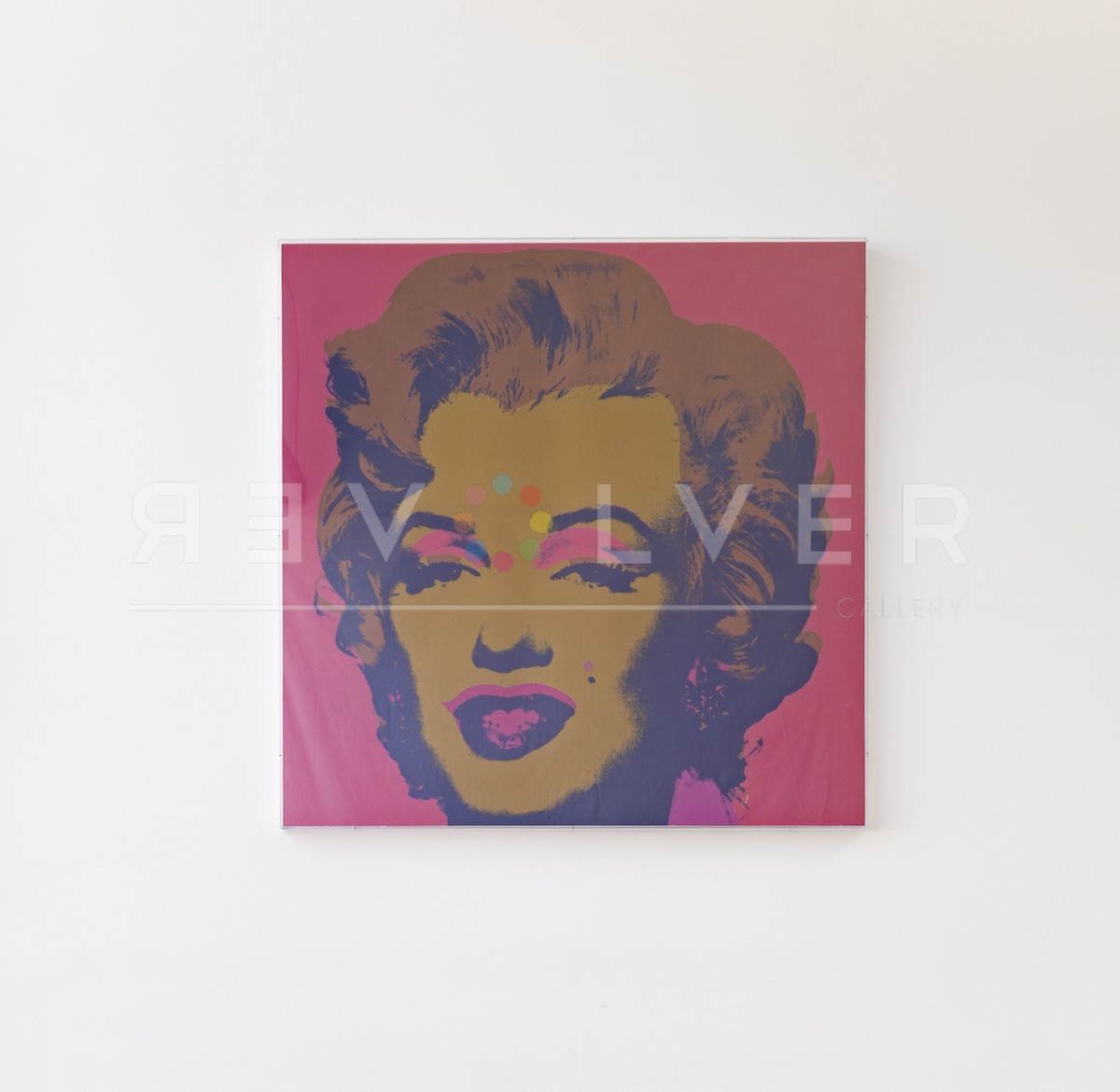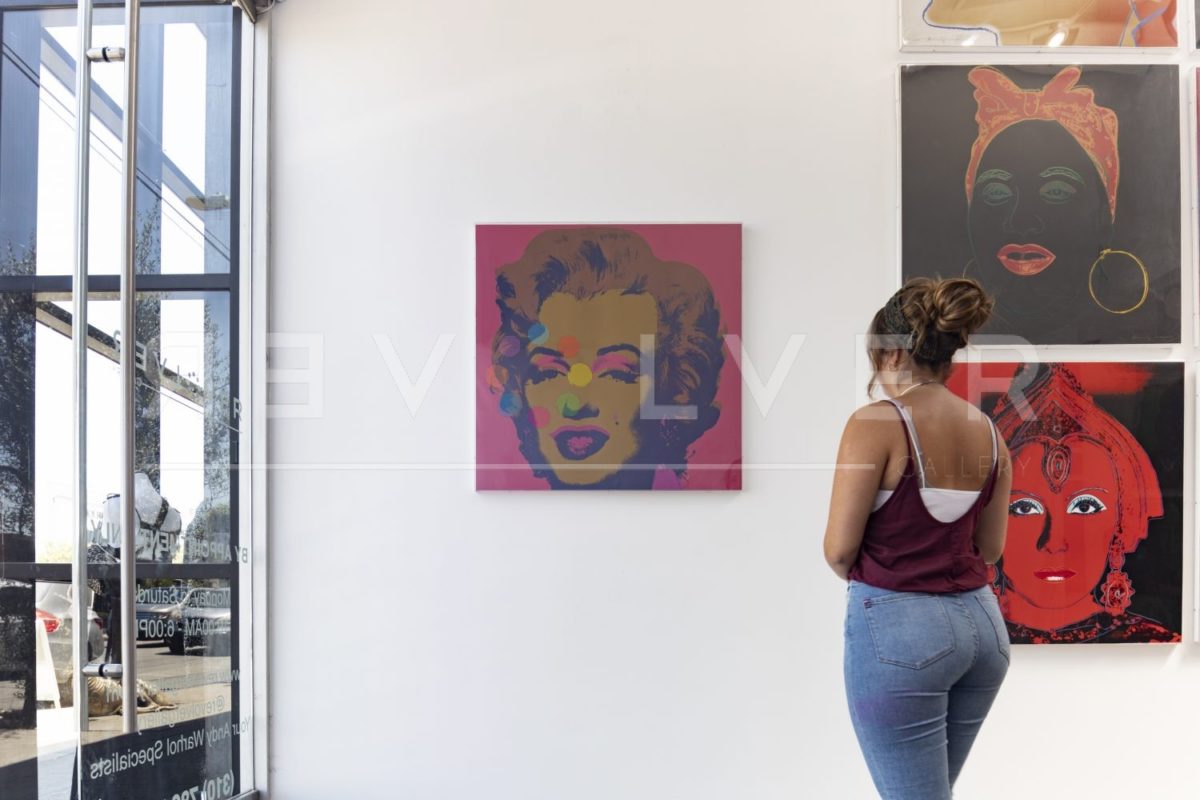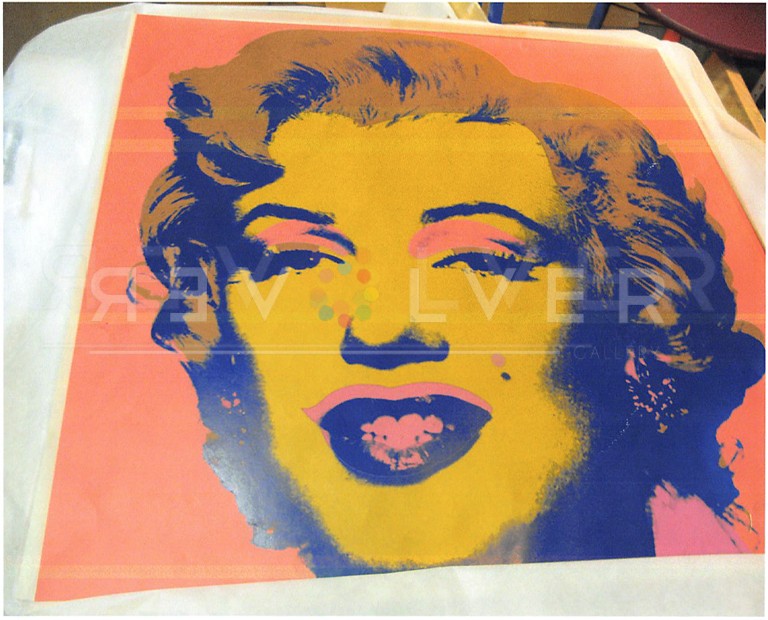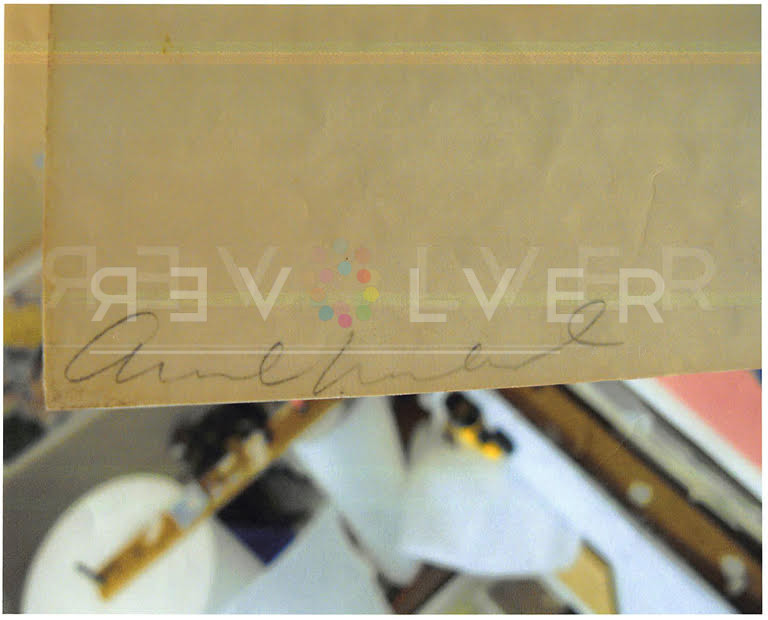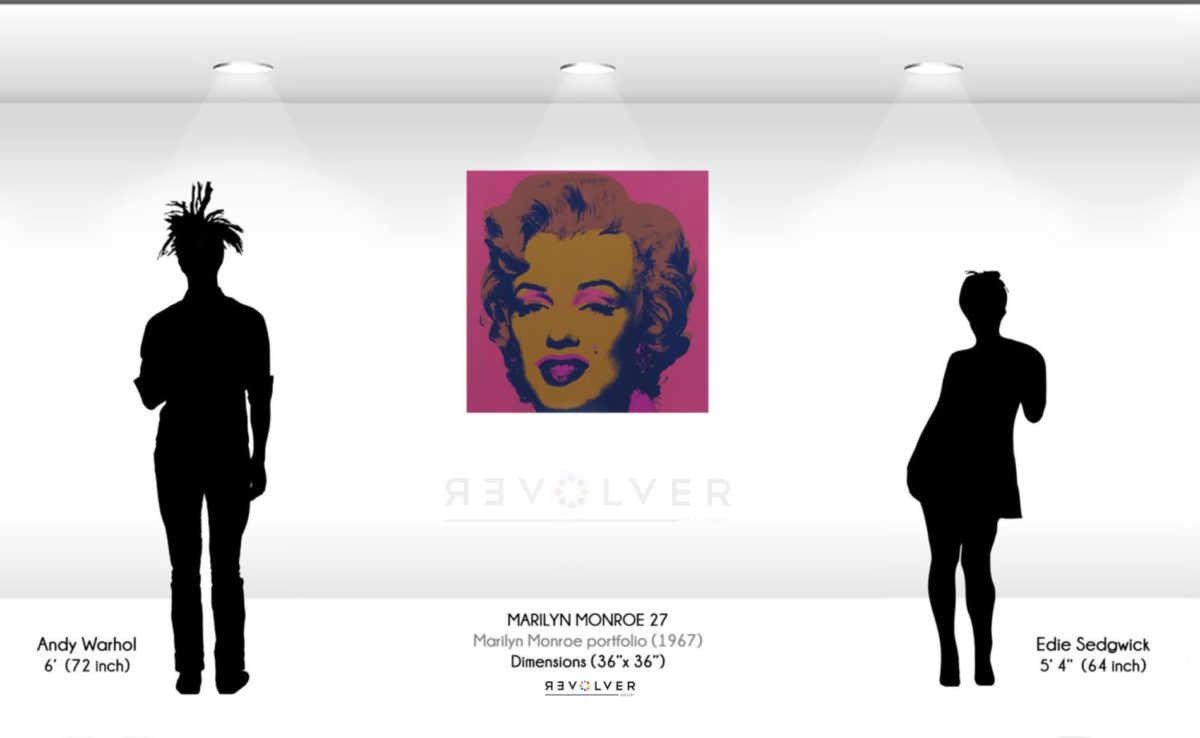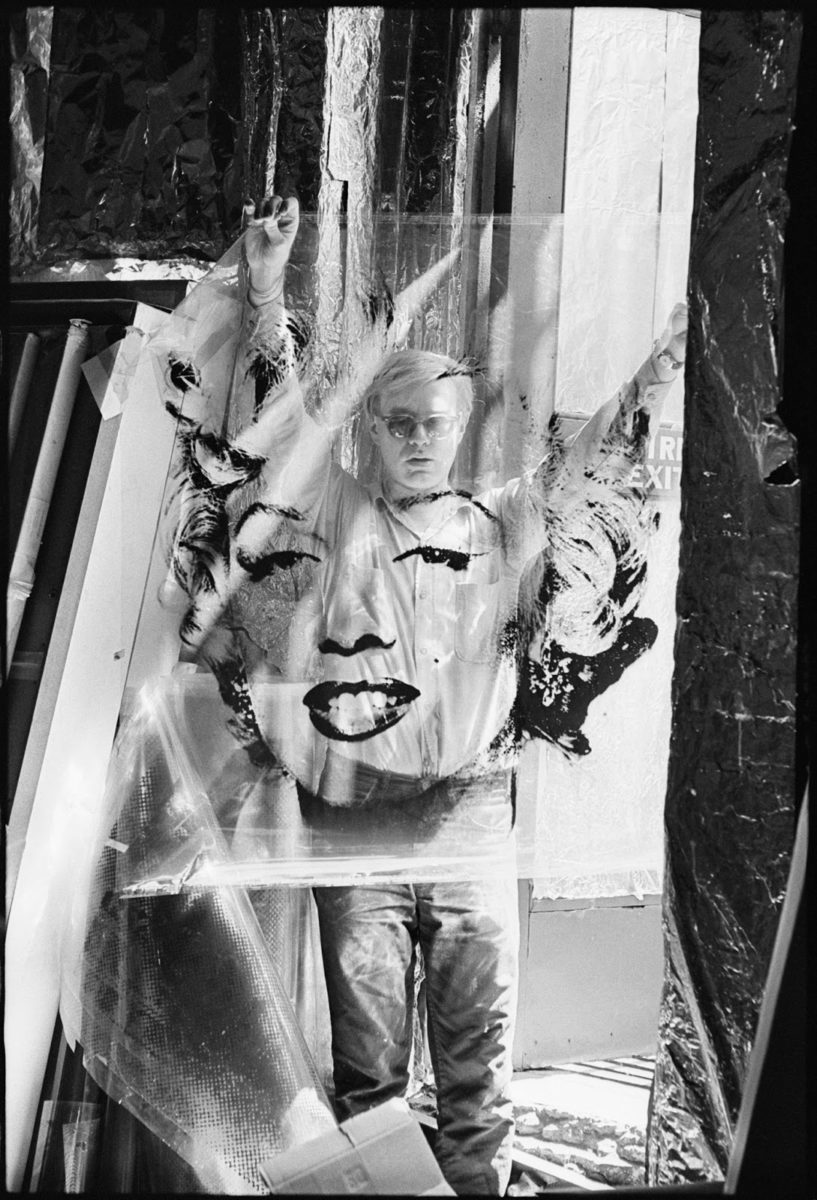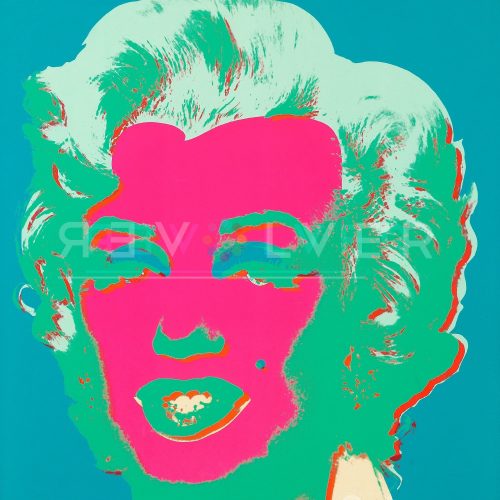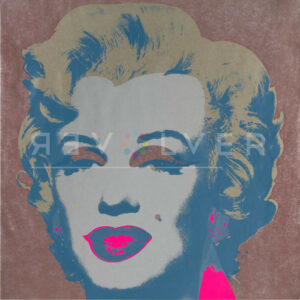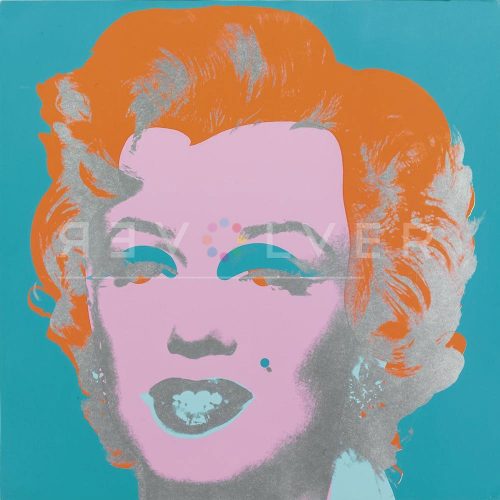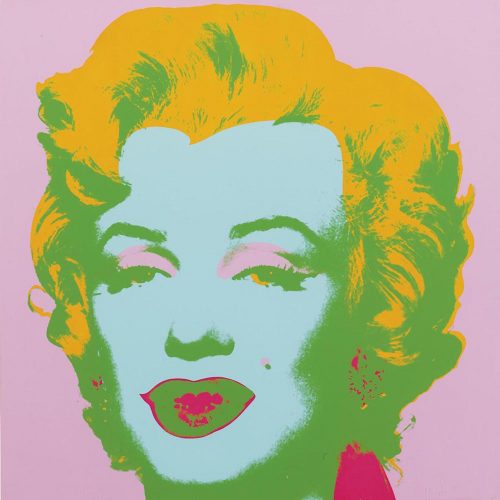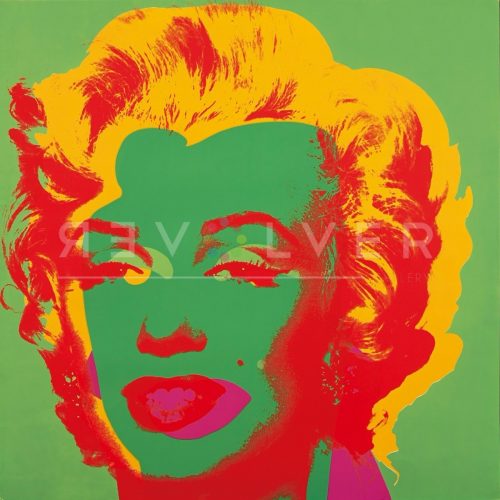Marilyn Monroe 27 is one of 10 screen prints included in Andy Warhol’s 1967 Marilyn portfolio. Transfixed with her undeniable star quality, Warhol originally printed the actress’s portrait in a diptych from 1962, but revisited her image five years later and after her tragic suicide to create some of his most iconic prints. The portfolio depicts Marilyn as the perfect symbol of Hollywood fame, beauty, and glamour, presenting her in high-contrast vibrant colors. The portraits have become some of the most significant works of the Pop Art movement, which Andy pioneered.
His original creation, Marilyn Diptych, consists of 50 painted images of the actress in color as well as black and white. It is amongst his most notable works, but the Marilyn series from 1967 is perhaps even more popular. For all of his Monroe portraits, Warhol used the same photograph: a publicity shot by Gene Korman for Monroe’s 1953 film Niagara. His decision to use the publicity photo for his series sparked controversy about artistic appropriation.
From the Post-War perspective on mass production, consumer culture, and industrial advancement, Warhol found a passion that drew him to highly visible images and the material factors that shaped the contemporary media and economic landscape. His interest in mimicking factory production by replicating preexisting, familiar imagery in his own studio, The Silver Factory was the beginning of an enduring discourse about the extent to which an artist can reuse a ready-made motif before it becomes a copyright issue.
In Marilyn Monroe 27, also known as ‘Copper Marilyn’ or ‘Magenta Marilyn,’ Warhol captures the essence of his society’s desire, and projects the American ideal back to us in sensually saturated tones that feel like visual velvet. The actress, known for more than 20 films including How to Marry a Millionaire (1953), The Seven Year Itch (1955), and Some Like It Hot (1959), became a sex symbol in the 1950s. At the time, sex was still considered taboo, but Marilyn’s rise to fame became part of a cultural shift in sexual expression and seduction as a marketing tactic. From Warhol’s perspective, the Marilyn Monroe portfolio showcases not a single individual, but confronts his audience with their own luxurious fantasies.
Andy Warhol’s Marilyn artworks are some of the most recognizable in his oeuvre. Warhol understood Monroe for her cultural significance, and recognized her as a mass-produced product of the entertainment industry, particularly as an embodiment of the American dream. A quintessential figure of the Hollywood limelight, for Warhol, Marilyn was a representation of the way that the American media romanticizes and markets certain identities. However, as much as fame and splendor made Marilyn, so did suffering. After her death, Warhol reproduced Marilyn’s portrait in pop-art fashion, further immortalizing her image as an expression of pop-culture.
Not only is the Marilyn Monroe portfolio an exemplary manifestation of Warhol’s infatuation with all-things celebrity and the Pop culture of mid-century America, it is a distinctly haunting series of portraits that display society’s morbid fascination with death and tragedy. Experimenting with the screen print technique, Warhol embalms Marilyn Monroe in a myriad of lavish colors, forever frozen as society imagined her.


